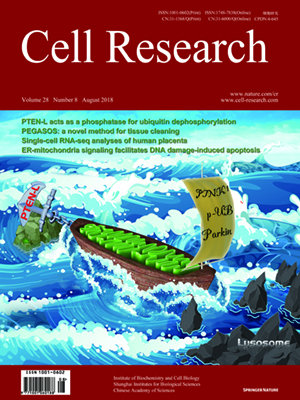
Advanced Search
Submit Manuscript
Advanced Search
Submit Manuscript
Volume 28, No 8, Aug 2018
ISSN: 1001-0602
EISSN: 1748-7838 2018
impact factor 17.848*
(Clarivate Analytics, 2019)
Volume 28 Issue 8, August 2018: 819-832 |
Yawei Liu 1, Xiaoying Fan 2, Rui Wang 2, Xiaoyin Lu 1,3, Yan-Li Dang 4, Huiying Wang 5, Hai-Yan Lin 1, Cheng Zhu 1, Hao Ge 2,James C. Cross 6 and Hongmei Wang 1
1 State Key Laboratory of Stem Cell and Reproductive Biology, Institute of Zoology, Chinese Academy of Sciences, 100101 Beijing, China; 2 Biomedical Pioneering Innovation Center, College of Life Science, Peking University, 100871 Beijing, China; 3 Department of Experimental Radiation Oncology, The University of Texas MD Anderson Cancer Center, Houston, TX 77030, USA; 4 Department of Obstetrics and Gynecology, The 306th Hospital of PLA, 100101 Beijing, China; 5 Department of Obstetrics and Gynecology, Beijing Shijitan Hospital, 100038 Beijing, China and 6 Departments of Biochemistry and Molecular Biology, Comparative Biology and Experimental Medicine, Obstetrics and Gynecology, and Medical Genetics, University of Calgary, Calgary, AB T2N 4N1, Canada Correspondence: James C. Cross (jcross@ucalgary.ca) or Hongmei Wang (wanghm@ioz.ac.cn)These authors contributed equally: Yawei Liu, Xiaoying Fan, Rui Wang, Xiaoyin Lu
https://doi.org/10.1038/s41422-018-0066-y